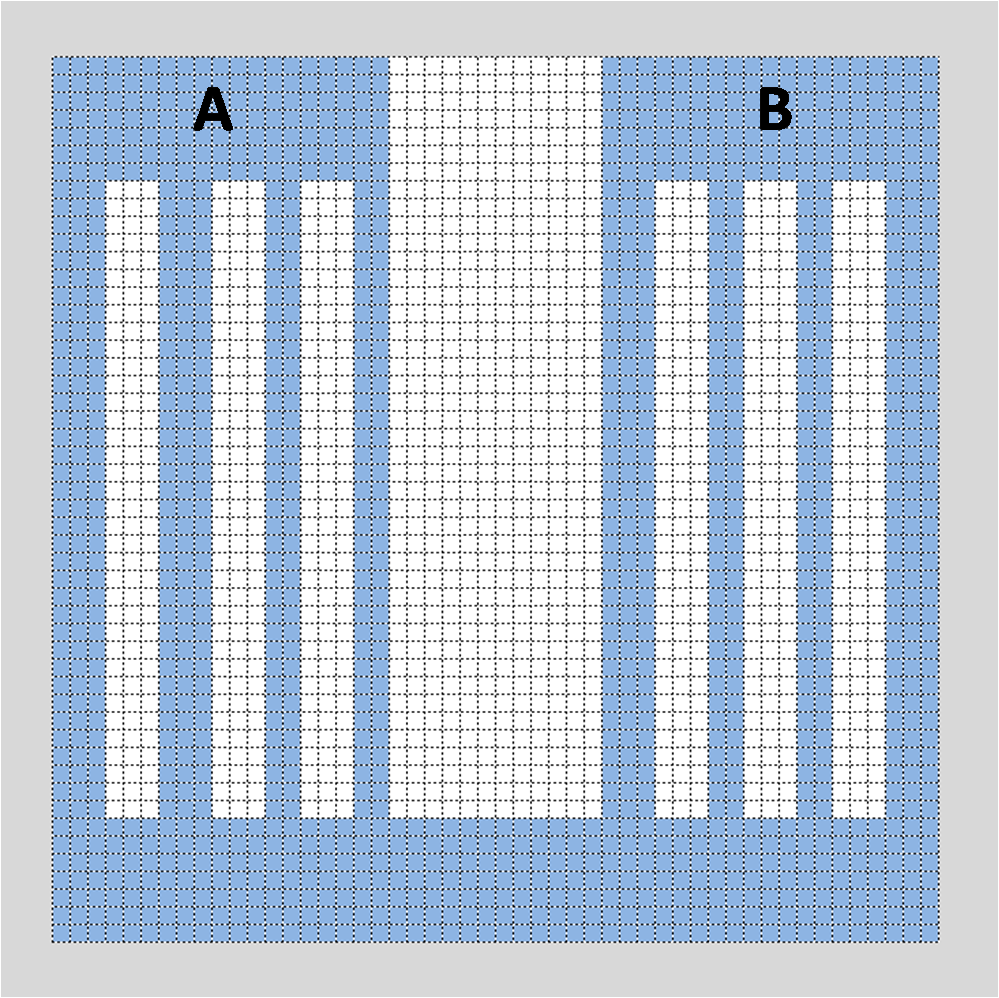I have a project to build heating element using silver ink.
My specification is the heating element must be in range 2 to 2.6ohm
I will design the circuit for the heating element, but have a problem
how to theoretically measure the resistance of the circuit(before send to print house).
Based on reference on this website
http://circuitcalculator.com/wordpress/2006/06/14/conductive-ink-traces/
the resistance can be measure as below
Resistance = Sheet_Resistivity*(Length/Width)*(Ref_Thickness/Thickness)
In my case,
Sheet Resistivity = 10miliohms/square,
Ref_Thickness = 1mil(0.025mm)
Thickness = 1mil(0.025mm)
1) Based on the quotation, if I have 50mm x 50mm & another one is 10mm x 10mm
silver ink with same thickness, the ohm will be the same which is 10miliohms.
Is it logic?
2) Another question is, how to measure the resistance if I design a complicated
circuit as per attached image? In the image, 1box considered as 1mm x 1mm
Point "A" and point "B" will be connected to battery(+ve & -ve).
Blue color indicate the silver ink

Your advice and explanation will be very helpfull. Thank you.

